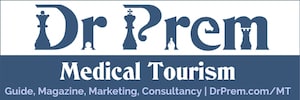Definition:
Coronary artery bypass graft surgery is commonly performed to restore normal blood flow to the heart in patients having a blockage of one or more coronary arteries, thereby reducing the risk of death and angina. During the surgery, blocked coronary arteries are bypassed by a blood vessel graft, mostly taken from the patient’s own arteries and veins located in the leg, arm, or chest.
Why it is needed:
- Coronary artery disease with blockage in at least 2 to 3 major coronary arteries
- Mild exertion causes severe angina or chest pain
- Poor left ventricular function
- No response to conservative treatment
Symptoms of coronary artery diseases include:
- Chest pain
- Shortness of breath
- Weakness, tiredness, reduced exertion capacity
- Dizziness, palpitations
- Swelling of leg, weight gain
Facts and Figures:
- The description of patients with heart failure can be seen in the Ebers Papyrus, one of the oldest preserved medical documents written around1600 BC.
- Coronary artery atherosclerosis is the main cause of coronary artery disease, and is responsible for a majority of deaths in both men and women in the United States.
- The first coronary artery bypass surgery was performed by a team of surgeons led by Dr. Robert Goetz in 1960 at Albert Einstein College of Medicine—Bronx Municipal Hospital Center.
- According to AHA data 448,000 CABG surgeries were performed in the year 2006 in America.
- The risk of developing coronary artery disease is equally prevalent among men and women, in all races. The risk increases from the 40 and beyond.
- The mortality rate is higher in women, because women develop coronary artery disease approximately 10 years later than men.
Advantages and Disadvantages:
Advantages:
- Marked improvement in symptoms such as chest pain and ischemia.
- The surgery helps patients resume a normal life and improves quality of life.
- It reduces the risk of heart attack and extends a patient’s lifespan.
- High success rate; approximately 90% of patients are satisfied with the results and experience major improvements after the heart bypass
Disadvantages:
- Heart bypass does not prevent the recurrence of coronary artery blockage.
- The overall mortality rate associated with heart bypass is 4-5 %.
- Increased risk of chest infection and lung complications.
- Possibility of short term memory loss and ability to think clearly. Usually these symptoms subside within 6 months after the surgery.
Risks and Complications:
- Blockage or closing of graft.
- Damage to adjacent arteries and veins.
- Abnormal heart rates– arrhythmia
- High or low blood pressure
- Blood clots can increase the risk of heart attack.
- Kidney failure
- Depression or mood swings.
- Anaesthesia reaction
- Bleeding
- Pulmonary embolism
- Infection
Pre-operative preparations:
- The surgery should ideally be performed when a patient becomes medically stable following a heart attack.
- Avoid dental treatment before the CABG or take antibiotics as per the surgeon’s advice.
- Complete physical examination
- Blood and urinalysis
- Diagnostic tests like ECG, stress tests, cardiac catheterization, X-rays.
- Consultation with surgeon or doctor a week prior to surgery; doctor will prescribe medications and provide advice as to medicines that need to be discontinued.
- Inform the surgeon about smoking and alcohol consumption patterns. Quit smoking.
- Notify the surgeon if you develop a cold, fever or sore throat a few days before surgery is scheduled.
- Arrangements with family and/or friends to help during the post-operative rehabilitation.
- Prepare home as per the requirements for recovery after the surgery.
- Do not eat or drink anything after midnight the night before surgery.
Post-operative care:
- Usually the patient will need to stay at the hospital for 7-10 days after the surgery, including the first few days in the intensive care unit (ICU). Patient’s vital statistics will be monitored constantly.
- The drainage tube will be removed within 1-3 days after surgery.
- There will be some discomfort in the chest during activity for about 2 months.
- Cardiac rehabilitation will commence once patient becomes stable, within a few days of the surgery.
Do’s, Don’ts and Precautions:
- Do keep the incision clean and dry.
- Don’t cross the legs and keep the feet elevated if the saphenous vein is used for the graft
- Do walk daily as per the instructions of the surgeon
- Follow the prescribed lifestyle changes to for optimum results.
- Quit smoking
- Do maintain a healthy weight with proper diet and exercise.
- Participate in a post cardiac rehabilitation program.
- Do take the prescribed medication meticulously.
- Do be regular at follow up visits with surgeon and physician.






